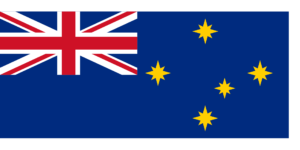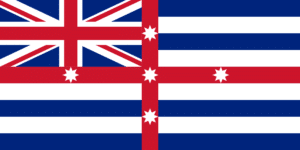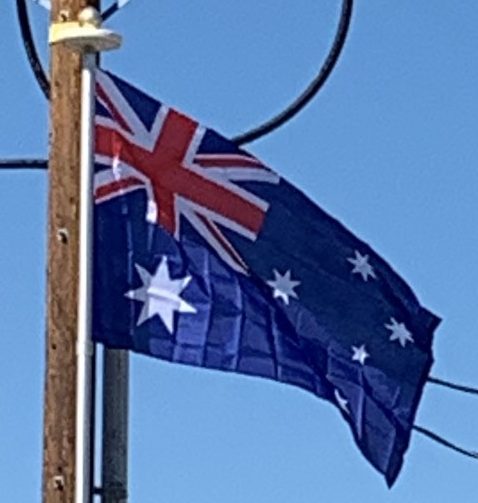
The differences were that there was no Commonwealth Star, while the components of the Southern Cross are depicted with eight points and in gold. This flag was only briefly in usage, as two years after the formation of the Anti-Transportation League in 1851, the colonial authorities decided to stop the intake of convicts, so the ATL ceased its activities. The Eureka Flag is often viewed as the first “Australian” flag as it was the first notable example of a design that had the Southern Cross while excluding the Union Flag. The Murray River Flag, popular since the 1850s, is still widely used by boats that traverse Australia’s main waterway.

It is the same as the National Colonial Flag, except that the white background in the three quadrants other the canton were replaced with four alternating blue and white stripes, representing the four major rivers that run into the Murray River.
As Federation approached, thoughts turned to an official federal flag. In 1900, the Melbourne Herald conducted a design competition with a prize of 25 Australian pounds (2017: A$3,700) in which entries were required to include the Union Flag and Southern Cross, resulting in a British Ensign style flag.
The majority of designs incorporated the Union Flag and the Southern Cross, but native animals were also popular, including one that depicted a variety of indigenous animals playing cricket. The entries were put on display at the Royal Exhibition Building in Melbourne and the judges took six days to deliberate before reaching their conclusion. Five almost identical entries were chosen as the winning design, and the designers shared the £200 (2009: $25,000) prize money. They were Ivor Evans, a fourteen-year-old schoolboy from Melbourne; Leslie John Hawkins, a teenager apprenticed to an optician from Sydney; Egbert John Nuttall, an architect from Melbourne; Annie Dorrington, an artist from Perth; and William Stevens, a ship’s officer from Auckland, New Zealand. The five winners received £40 each. The differences to the current flag were the six-pointed Commonwealth Star, while the components stars in the Southern Cross had different numbers of points, with more if the real star was brighter. This led to five stars of nine, eight, seven, six and five points respectively.
A comprehensive overview of the history of the Australian flag is available elsewhere.
